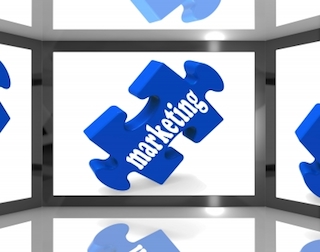The latest smart phone. A new outfit. A favorite movie. Blind and disabled people want the same products as everyone else — but we’re often overlooked when it comes to advertising. That’s why smart marketers will identify blind people as a viable target market with money to spend. Here’s how to get us engaged:
Celebrate with us. Disabled people are parents, siblings, coworkers, friends, and family. Just like anyone else, we have birthdays, graduations, anniversaries, and other reasons to celebrate. People want to buy us nice things for these occasions. So why not market to us?
Debunk the diversity myth. Modern advertising tells you that an inclusive campaign is one that features people of different races, ages, and sexual orientation. But the truth is that disabled individuals are the biggest minority group. It contains members from all faiths, racial groups, genders, socioeconomic statuses, and sexual orientations. I believe that in order to truly execute an inclusive marketing campaign, disabled individuals must be included.
Be authentic. Every time a commercial profiles a blind person, I hear about it from friends and family. Unfortunately, in most cases, it is an actor or model pretending to be blind. And that irritates many blind people. Successful ads feature a true blind person with a real story. There are plenty of blind people in the world doing amazing things — you just have to look.
Ask for counsel. As a marketing professional, you want to make people with disabilities feel engaged in your campaign and included in your market. Ask members of the specific disability for advice to ensure you’re going about it the right way. Because etiquette ranges from one disabled group to the next, you may want to consult specialized non-profits to ensure you’re not accidentally making the group feel different or excluding them when you’re trying to do the opposite.
Find us on Facebook. Thanks to social media, our voices are becoming more powerful – and smart marketing professionals will listen. The disabled are a viable market; we have money, aspirations, and goals, just like everyone else. Social media can be a great resource for learning what sorts of products and services we want. It’s also a fantastic tool for reaching us with your message.
Follow the leaders. Marketing to the blind can be easier that you think. For example, a few years ago, Samsung did a commercial that showed a blind woman using a Samsung cell phone. It was a simple gesture that garnered a huge response; the ad was so popular that I even got the same phone as a birthday gift. On a smaller scale, San Francisco-based Modern Appeal Clothing offered to dress me for the GLAAD Media Awards and for my photo shoot with the San Francisco Chronicle. I got many compliments on the looks they chose, and I was happy to share where the clothes came from. These were fairly general promotional approaches, but the companies knew it was worth going the extra mile for a huge increase in audience engagement.
Advertising to the blind may not be your first thought when developing a marketing plan. Because we’re often overlooked — but have the same wants and needs as everyone else — marketing to us can give you a valuable edge in today’s competitive marketing landscape.
Who is Belo Cipriani?
Belo Cipriani is the Writer-in-Residence at Holy Names University, a spokesperson for Guide Dogs for the Blind, and the author of Blind: A Memoir. You are invited to connect with him on Facebook, Twitter, Google+ and YouTube.

